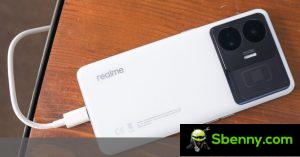As the saying goes “home is where Wi-Fi automatically connects”. As much as smartphone makers focus on advertising their phones’ next generation cellular connectivity, many of us spend most of our day connected to the internet via Wi-Fi.
Wi-Fi is certainly not the first method to transfer data between nearby devices wirelessly. Early PDAs used infrared, which allowed them to synchronize calendar appointments and e-mail boxes, for example. However, infrared is directional, so to connect your handheld and PC you need to aim the IR adapter and hold still for a few seconds. The easiest way to do this was to have both the device and the adapter sitting on a desk. Technically, you didn’t plug in any cables, but there was little difference in mobility.
PDAs were among the first pocket devices to get Wi-Fi connectivity, even though they weren’t always equipped with the feature from the factory: CF and SD cards were used as modular add-ons that could enable Wi-Fi, GSM, Bluetooth and other features.

Unsurprisingly, the first Wi-Fi-enabled mobile devices were Windows Mobile PDAs. Wi-Fi connected you to the Internet (and corporate intranets) and could sync email, calendars, and so on, mostly work-related tasks.
Bluetooth is another early wireless local connectivity option. However, it was slower than Wi-Fi (which was more important for laptops than PDAs but still) and had less range (at least with commonly available adapters).
Wi-Fi is limited by law to a transmission power of 100mW and the rule of thumb is that a range of up to 100m can be achieved under ideal conditions (e.g. outdoors with an unobstructed view). Interesting note: In 2007, researcher Ermanno Pietrosemoli managed to transmit 3 MB of data at a speed of 3 Mbps between the mountain peaks of El Aguila and Platillon in Venezuela, which are separated by 382 km/238 mi. Some long-range Wi-Fi connections are in use today to connect remote mountain locations, but these are the exceptions to the rule.

In 2007, a 382 km link was established between the mountain peaks of El Águila and Platillon
Before we continue, we should cover Wi-Fi naming. Firstly, “Wi-Fi” stands for “Wireless Fidelity” (similar to Hi-Fi) and was coined by a trademark consultancy, who were hired to come up with something that was “a little more appealing than ‘IEEE 802.11b Direct Sequence'”. The technology is part of the IEEE 802.11 family, and several versions add a letter, such as 802.11b.
But it’s not very catchy, is it? So in 2018 the Wi-Fi Alliance changed things to a simpler and more intuitive naming scheme: Wi-Fi 802.11n became Wi-Fi 4 and later versions adopted later numbers. Check out the table below. Note that 802.11g and earlier versions have been retroactively renamed as “Wi-Fi 4” doesn’t make much sense without them.
| Generation | IEEE standards | Adopted | Maximum link speed (Mbit/s) | Radio Frequency (GHz) |
| Wifi 1 | 802.11b | 1999 | 1 to 11 | 2.4 |
| WiFi 2 | 802.11a | 1999 | 6 to 54 | 5 |
| WiFi 3 | 802.11g | 2003 | 6 to 54 | 2.4 |
| WiFi 4 | 802.11n | 2008 | 72 to 600 | 2.4/5 |
| Wifi 5 | 802.11ac | 2014 | 433 to 6,933 | 5 |
| Wifi 6 | 802.11ax | 2019 | 574 to 9,608 | 2.4/5 |
| WiFi 6E | 2020 | 6 | ||
| Wifi 7 | 802.11be | 2024 | 1,376 to 46,120 | 2.4/5/6 |
Let’s take a look at some of the major evolutions of Wi-Fi. Early versions operate in the 2.4GHz band, the so-called ISM radio band (ISM stands for Industrial, Scientific and Medical as those were the band’s initial uses). As the regulations in this range are quite vague, there are many devices operating there. Including microwave ovens, which are at least part of why 2.4GHz is the wild west of wireless. Early on, when a microwave started blasting 1000W over lunch, the Wi-Fi and Bluetooth connections briefly became unreliable. Modern appliances are much more durable (and modern ovens are better insulated).
Wi-Fi 4 (802.11n) is probably the biggest improvement in Wi-Fi since its inception. Most Wi-Fi before 2008 ran at 2.4GHz, although 5GHz was supported from the start: Wi-Fi 1 (802.11b) ran at 2.4GHz, Wi-Fi 2 (802.11a) to 5 GHz. Both standards date back to 1999, although 2.4 GHz was the most commonly used band. However, as noted above, it got very, very crowded and connectivity suffered.
Wi-Fi 4 reintroduced support for the 5GHz band. It was less crowded and could accommodate larger channels. Initially, channels in the 2.4GHz band were only 5MHz wide, later support for 20MHz channels was added. This created a problem, however, only four 20MHz channels fit in the band 2.4 GHz without overlapping (i.e. without interfering with each other).
This is why you should space out your Wi-Fi channels: the best channels to choose are 1, 6, and 11 (there are channels 12 and 13, but they’re not available everywhere). For comparison, the 5GHz band has room for at least 23 non-overlapping 20MHz channels.

Either way, Wi-Fi 4 added support for pairing two 20MHz channels to double the speed. Then came Wi-Fi with added support for 80MHz channels and the ability to combine two of those channels for a total of 160MHz. This only worked at 5GHz, of course, since 160MHz is more than width of total bandwidth allocated for Wi-Fi in the 2.4 GHz band.
Wi-Fi 4 also introduced support for Multiple Input, Multiple Output, also known as MIMO. This allowed devices (both transmitters and receivers) to have multiple antennas, which had two main benefits: it increased range and speed.
These days the 5GHz band is also pretty crowded, so Wi-Fi 6 moved upstairs and opened up the 6GHz band. This technology is called Wi-Fi 6E and in the US (it varies slightly depending on the country) has access to a massive 1,200 MHz bandwidth. There’s plenty of room here, 6E fits seven 160 MHz channels, although range is limited compared to lower frequencies. That’s a blessing and a curse: It helps ease congestion, but low throughput means you might need more access points or build a mesh network.

There’s a lot of interesting technology that we haven’t covered here. For example, Wi-Fi 6 introduced Target Wake Time, which reduces power consumption by making sure your mobile device is only awake when it needs to transmit or receive data, and can immediately go back to sleep afterwards.
There’s also the issue of security, from the sore WEP to the WPA standards that replaced it. The convenient WPS feature also had its problems (WPS allows users to connect a new device to the network by simply pressing a button on the access point and the device).
We haven’t even covered WiGig, a 60GHz standard, which we’ve seen in some mobile devices as a way to stream high-resolution, low-latency video to a display without using cables. But this post is already getting quite long, so we’ll leave it for another time.
The hottest thing on the horizon is Wi-Fi 7. Chip makers like Qualcomm and MediaTek are already gearing up and we could see the first devices as early as this year. The Snapdragon 8 Gen 2 and some phones powered by it claim to support Wi-Fi 7, although the standard is still in a draft stage and is expected to be completed in 2024. This has happened before, even the first Wi-Fi devices 4 launched based on a draft specification of the standard. Wi-Fi 7 will bring support for 320MHz bandwidth and speeds up to 30Gbps.

Do your phone and home access point support the latest Wi-Fi version? And is that something you’re interested in, or are you content with using an older version?







Start a new Thread